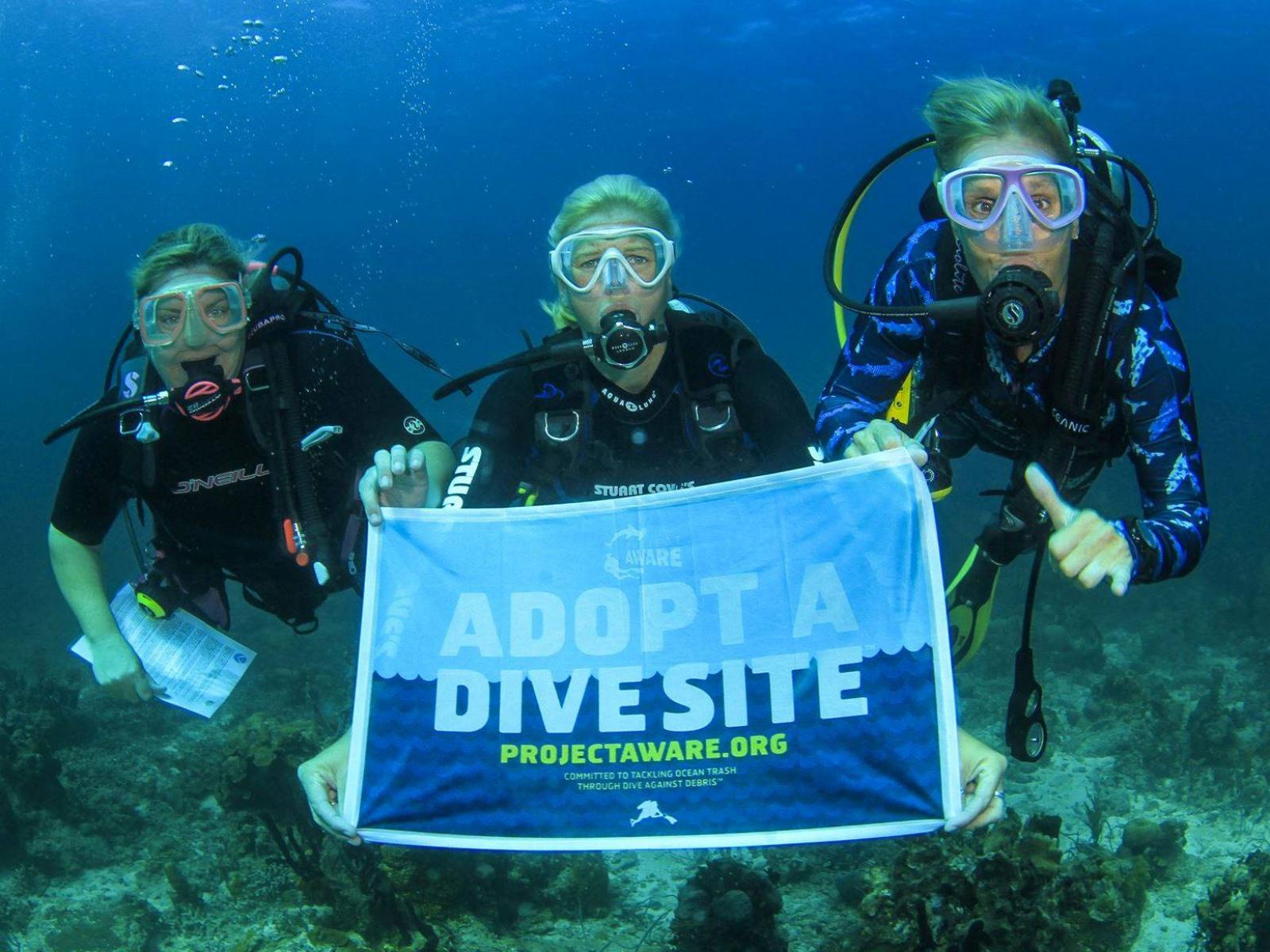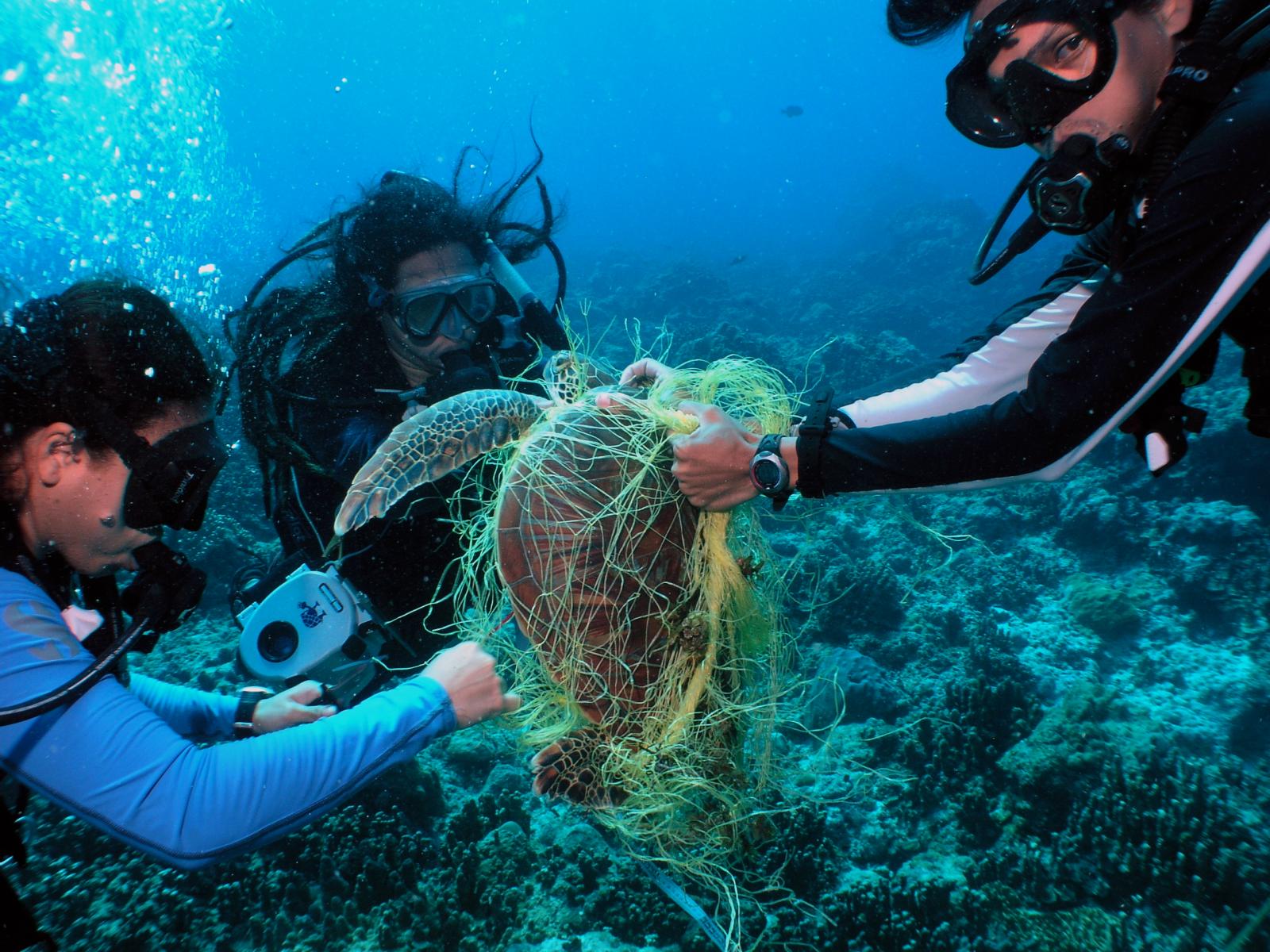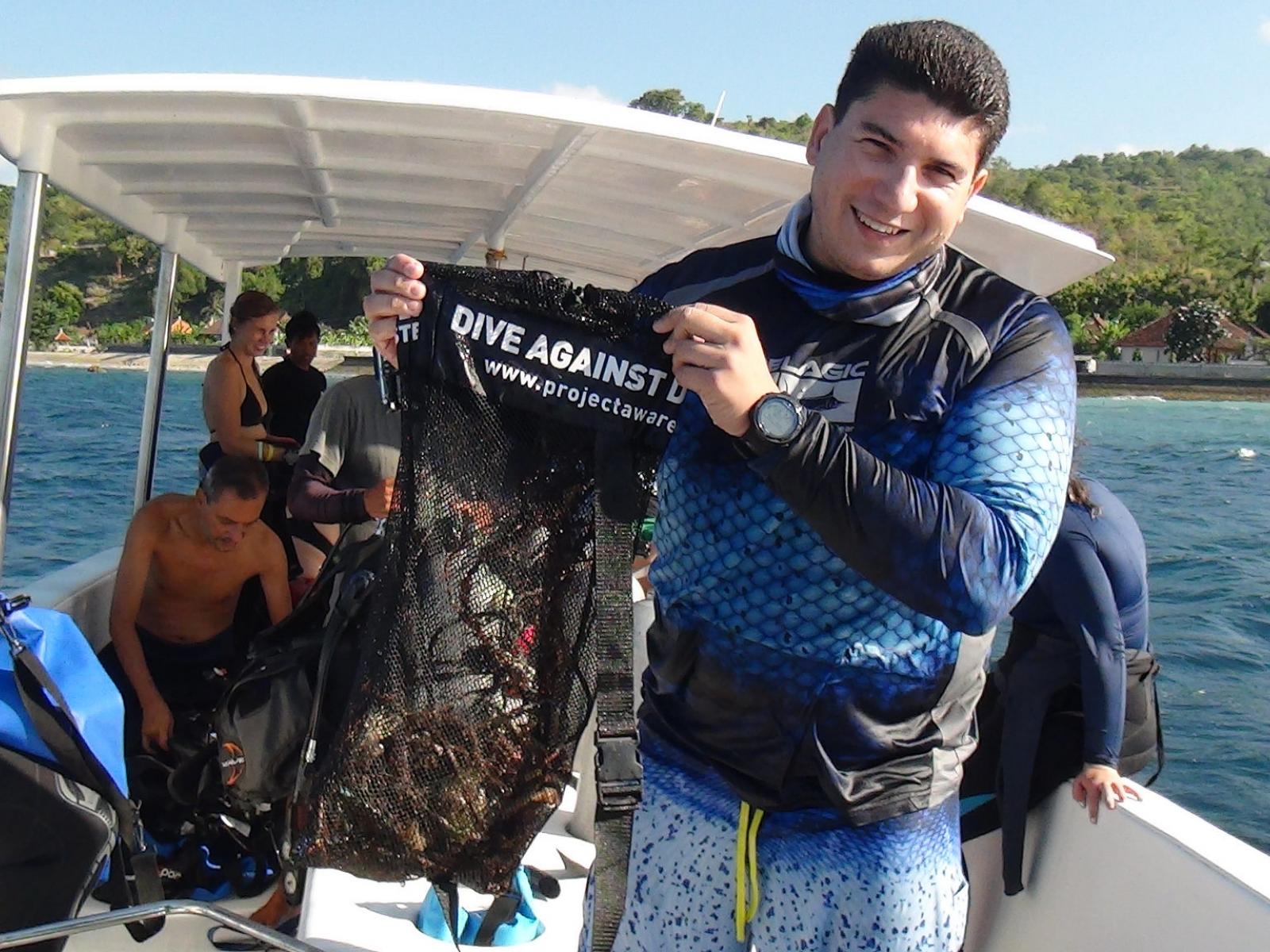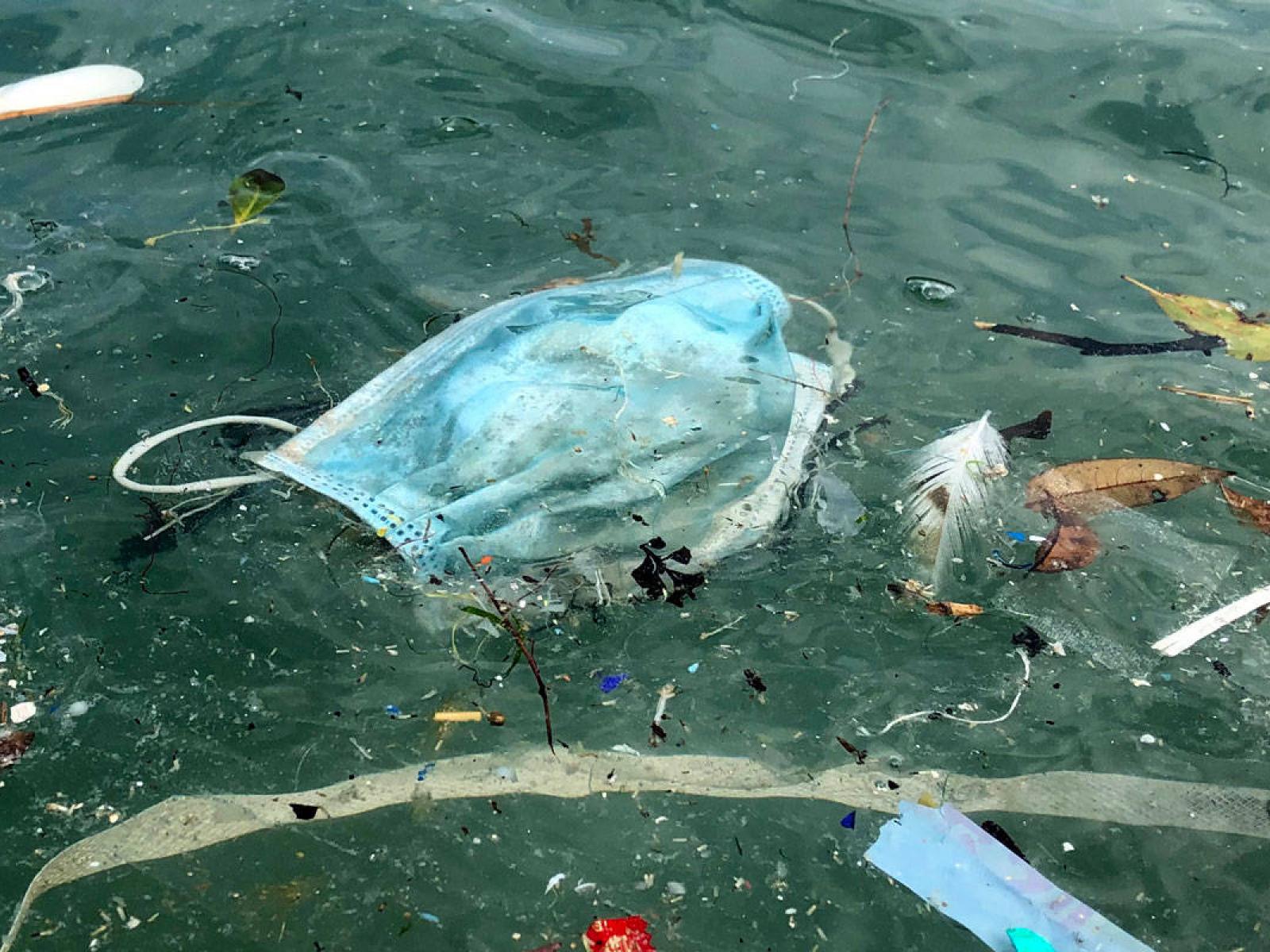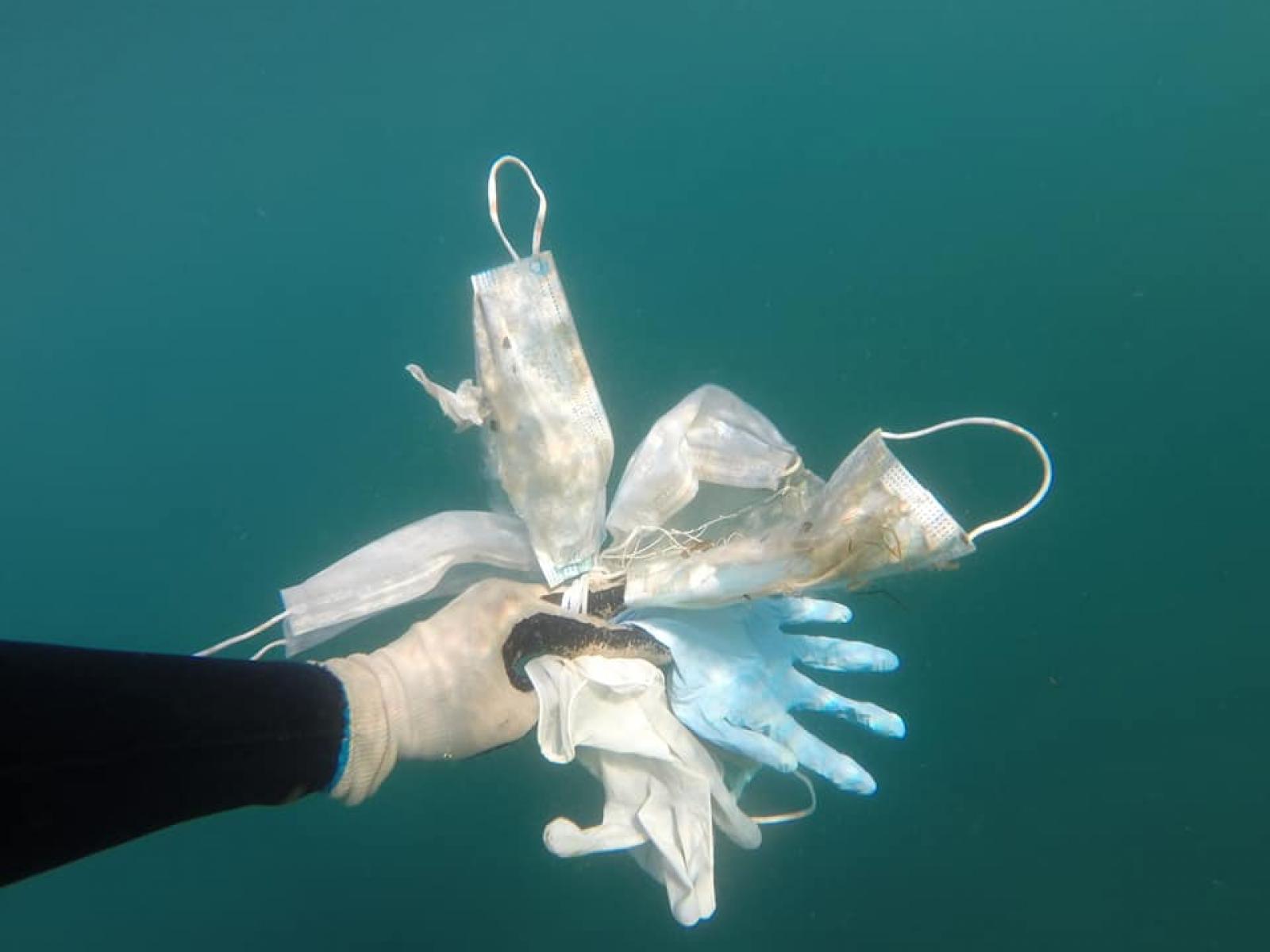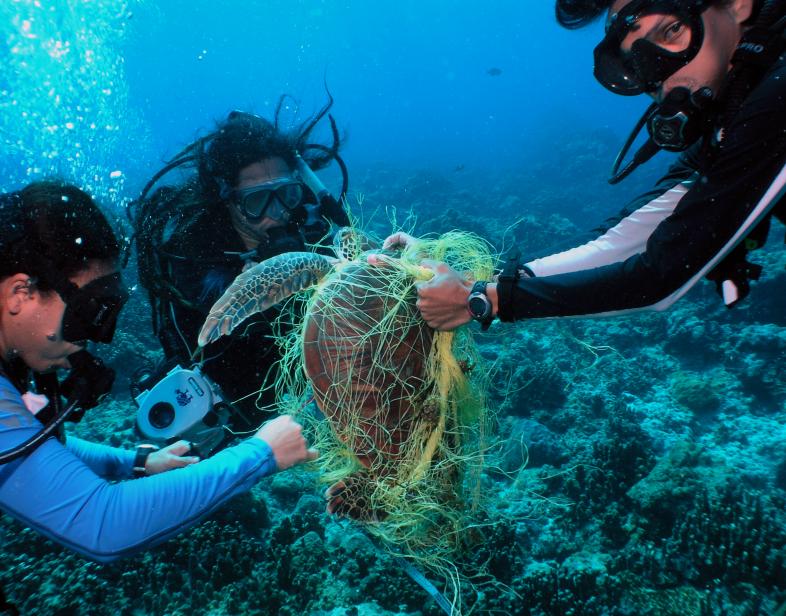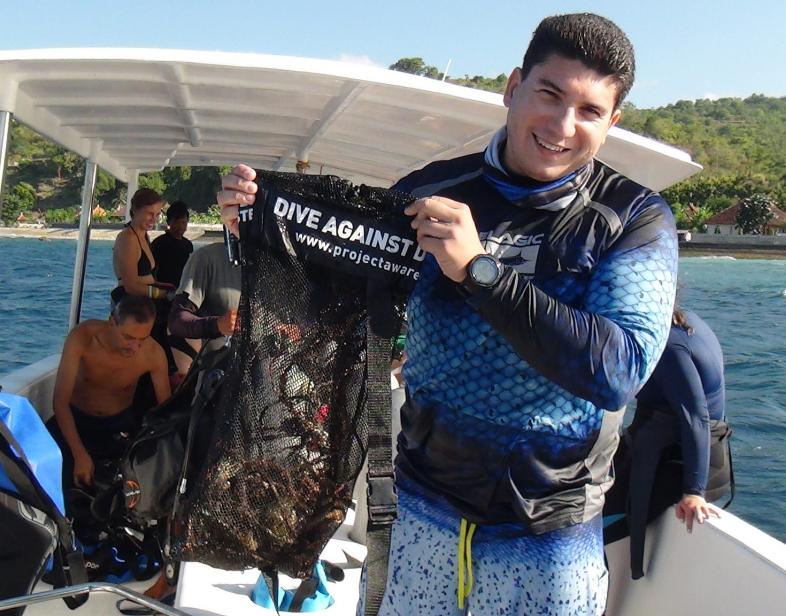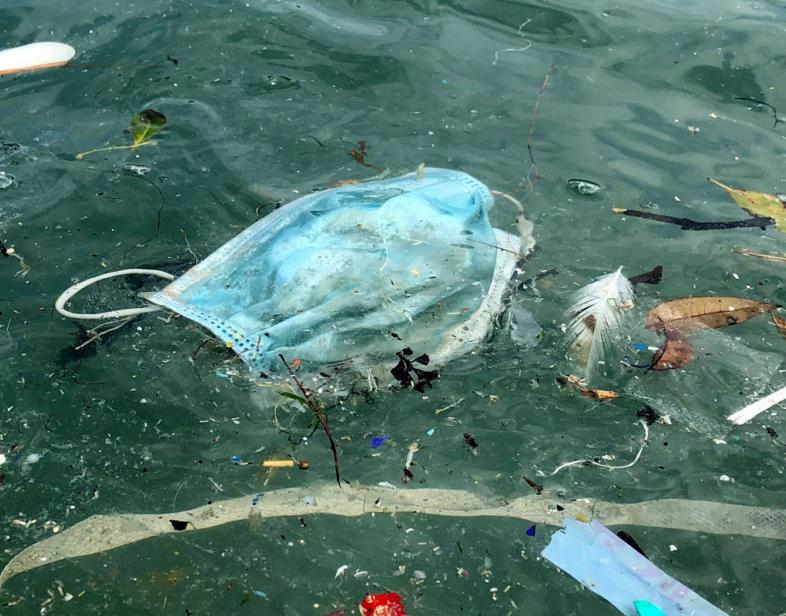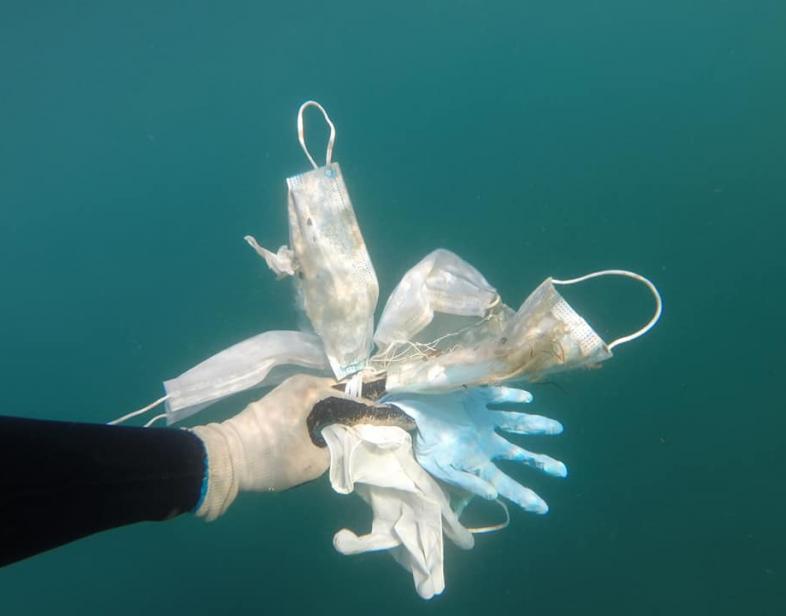An Overview Of Our Solution
Pollution is one of the overarching stressors impacting the ocean planet. Marine debris, manmade trash that enters the ocean, is highly damaging with long lasting impacts on marine life, ecosystems and our very own human health. It is difficult to clean ocean waste because it is found throughout multiple parts of the ocean and of the possible disruption to marine life. Most of the time, the debris is under the surface, making it impossible to see. However, there’s debris all the way from the ocean’s surface to the sea floor. This makes it difficult to clean unless you have the proper training and equipment. But global change is also empowered by grassroots action. That’s why the citizen science program, Dive Against Debris was developed. Focused on scuba divers reporting ocean debris to help bridge the gap between community action and policy change.
- Population Impacted: 3 billion
- Continent: North America
背景分析
An estimated 8.3 billion metric tons of plastics have been produced over the last century, of which 79% is estimated to have accumulated in landfills or the natural environment. The environmental damage caused by plastic debris alone is estimated at US$13 billion per year. As of 2016, mismanaged debris has been reported to interact with over 1400 species via direct and indirect mechanisms. At a time when much of the world is living with uncertainty due to the COVID-19 pandemic, one thing is apparent – conservation efforts to stop marine debris are needed now more than ever. As a result of the COVID-19 pandemic, we have seen a marked increase in single-use plastic items including disposable gloves, plastic bags, disposable plastic containers and cutlery. It’s certainly unprecedented and unfortunately presents significant collateral damage at a time where we were making such positive progress globally in managing the production and use of single-use plastic products.
描述您希望目标受众采用的技术解决方案。
96% of plastics are believed to sink to the seafloor yet little is known about the fate of marine debris once it enters the ocean and sinks to the seafloor. The data yielded through Dive Against Debris surveys is invaluable in order to help estimate seafloor debris. Volunteer scuba divers are encouraged to take action in the only program of its kind generating this type of data, operating on a global scale, year-round. Debris data on the number of items removed from the ocean during survey dives can be submitted via an app, building a picture of the issue. Additional information submitted includes geographical location, survey duration, images etc. While not required, volunteers can receive formal education and receive a certification as a Dive Against Debris Diver to fully comprehend the issue, sources and impacts of debris. Program participants who will implement and enforce change to reduce waste stream will receive an annual survey about their waste stream changes.
描述你的行为干预。
The #EveryDiveaSurveyDive campaign empowers global scuba divers to take action and speak out for our ocean, reduce water pollution and change behavior around waste. The campaign inspires diver’s sense of pride by highlighting the fact that only scuba divers have the skills to conduct underwater debris surveys and should put those skills to use to collect valuable data on every dive.
While a certification isn't required to participate, a formal certification can be achieved to correctly inform divers on how to safely conduct debris surveys and fully understand the larger debris issue. While professional scuba diving instructors are motivated to conduct the certification courses and earn a living through inspirational action, often dive centers and instructors come up with innovative ways to offer the course for free or a minimal cost to increase participation.
The Adopt a Dive Site initiative was introduced in 2016 to recognize Dive Against Debris leaders that commit to submitting survey data at least once and month and an app developed to improve the data submission process. Since then, the amount of debris data submitted has increased 30% through Adopt a Dive Site leaders and a 13% increase through use of the app.
Communicating findings on this quality dataset is critical to show how the data is being analyzed and peer reviewed to answer fundamental questions how marine debris interacts with ocean habitats and, importantly inform prevention solutions.
使用的行为杠杆
如需要,请更详细地解释你是如何使用杠杆的。
The levers used throughout the Dive Against Debris program include emotional appeals, information, material incentives, and social influences.
Comprehensive course materials have been translated into 13 languages and are provided free online, comprising of:
- instructor guide
- lesson guides
- app tutorial
- survey guide
- data card
- survey checklist
- marine debris ID guide
- tips to protect the ocean
- the Ugly Journey of Trash poster, video & infographic
Material incentives include an Adopt a Dive Site kit to leaders committed to regular data submission which include a banner, flag, underwater mesh bags, scales, decals etc which facilitate more accurate surveys and strengthen the brand. These items are often used in group photos which also support social influence and emotional appeals as our diver community see these images of entangled creatures and happy groups on social media and online and are inspired to obtain these items and get involved and help.
描述项目的实施。
To date approx 1.8 million debris items have been removed in over 100 countries, aiding and reporting over 11,600 entangled marine animals through the Dive Against Debris Program. The data is visualized within an online, interactive map - https://www.projectaware.org/diveagainstdebrismap highlighting the entangled animals, Adopt a Dive Site Surveys and even debris free sites – all data counts!
When the program launched, participants would remove debris without data submission and submission was limited to the desktop. Not the most effective method for scuba divers. Often dives take place off a boat where internet is not available. To assist the community an app was launched to allow data submission from a smart phone or iPad. Information can be entered offline and submitted when the leader has an internet connection. The app combined with the Adopt a Dive initiative has helped boost data submissions by 37%.
Through committed strategy over the years, we have successfully advanced the following clean ocean goals:
- Worked with local communities and cross-sectoral partners to facilitate and advance marine debris policy change at the local and regional level
- Developed a number of front-facing community engagement campaigns to facilitate more Dive Against Debris participation and educate tens of thousands of divers on this ocean threat
- Recruited new and retained existing volunteer divers, building a global movement of over 90,000 underwater citizen scientists
- Secured strategic partnerships with internationally renowned, world leading scientists in order to advance marine debris science and inform policy for the UN Sustainable Development Goals (SDGs)
In partnership with the Ocean Conservatory and CSIRO, released the first peer reviewed global study of its kind examining the relationship between land and seafloor debris, making a significant advancement in marine debris research.
描述项目的主导者。谁在主导项目实施?
With offices located in Australia, United Kingdom and the United States, the global Project AWARE team consists of a number of nationalities and collaborates to bring in a range of talents and perspectives. The Project AWARE board includes leaders in the scuba diving and environmental communities. Any Project AWARE program includes stakeholder engagement and feedback to continually improve our global reach, education and advocacy to create both local and global change for the ocean and the communities who depend on it. Our local actions collectively protect the most vulnerable marine species and decrease pollution.
分享参与解决方案开发和实施的关键合作伙伴。
Project AWARE’s lead corporate partnership is with the Professional Association of Diving Instructors (PADI®), the world’s leading scuba diving instruction company. The Dive Against Debris certification course was initially approved as a distinctive specialty and today is a formal standard course within the PADI diver education system. PADI also donates the instructor rating fee to Project AWARE which encourages instructor participation, instrumental in promoting and recruiting support from the dive community.
As part of a 25 year partnership with the Ocean Conservancy, program data is also shared with the global land data collection through the International Coastal Cleanup. Also, we have collaborated with the Ocean Conservancy and Commonwealth Scientific and Industrial Research Organisation (CSIRO) in a groundbreaking analysis project: “A quantitative analysis of land and seafloor debris to inform policy”.
Other partners include:
- Global Partnership for Marine Litter - (GPML) seeks to protect human health and the global environment by reducing marine litter.
- Trash Free Seas - the alliance unites industry, science and conservation leaders who share a common goal for a healthy ocean free of trash.
- Global Ghost Gear Initiative - a cross-sectoral alliance committed to driving solutions to the problem of lost and abandoned fishing gear (ghost gear) worldwide.
谁采用了期望的行为,采取的程度如何? 解释一下你如何测量行为变化的。
The action through the larger Dive Against Debris program is helping to realize the following Clean Ocean Strategy goals and outcomes:
- Share the underwater impacts of pollution through data collection and reporting to influence policy
- Reduce the amount of pollution in the ocean
- Save marine life from the detrimental impacts of pollution
Behavior change is measured through the number of divers completing the certification course and removing debris and submitting debris data online of through the app.
- Number of Dive Against Debris Certified Divers 7,000+
- Total surveys conducted: 12,840
- Debris-free surveys: 1,002
- Participants: over 90,000
- Countries: 120
- # of items removed and reported: 1,788,973
- Total weight: 500,000+ kgs / 1212542.44+ lbs
项目是如何影响水污染的?请详细说明并包括相关的测量方法。
The amount of pollution that is mitigated through education is immeasurable in addition to waste that is prevented through policy change today and into the future.
All debris data submitted is quality reviewed by the Project AWARE team to ensure accuracy and only debris collected from the seafloor is counted. A great deal of debris is collected that has not been counted through the program. Program results include:
- Total surveys conducted: 12,840
- Debris-free surveys: 1,002
- Participants: over 90,000
- Countries: 120
- # of items removed and reported: 1,8 million
- Total weight: 500,000+ kgs / 1212542.44+ lbs
您的解决方案如何促进平等(包括种族、性别、民族、社会阶层/收入,或其他)?
n/a
社会和/或社区是如何受益的?
Social and community benefits include increased safety for recreational users of the ocean for example boat propellers can become entangled in discarded fishing wire and other debris. Swimmers and surfers etc can be injured by floating debris.
Often diver’s active participation in cleanup activities inspire their friends and family to practice better litter habits once they realize the impact their actions can have on the ocean, in addition to joining in as surface/shore support.
环境是如何受益的?
Environmental co-benefits are realized through a cleaner and safer environment for marine life. For example, fish and crabs are known to make their home out of debris found. Glass debris can break and harm marine life in addition to plastic leeching toxins.
Less trash will be washed ashore reducing the impact of litter and improving the enjoyment of the beach.
可持续发展如何得到促进?
Project AWARE’s conservation strategy for a return to a Clean and Healthy Ocean, including Dive Against Debris - the organization’s flagship citizen science program, is in alignment with the United Nations Sustainable Development Goals in a number of target areas and includes Life Below Water, Responsible Consumption and Production, Clean Water and Sanitization, Zero Hunger, Partnerships for the Future, Good Heath and Well Being. For more info interact with the infographic https://bit.ly/36SvmAZ
可持续性:描述你的解决方案的经济可持续性。
Project AWARE’s Dive Against Debris program is mainly funded from small individual donations from ocean lovers and the general scuba diving community. Grants are also secured to fund this work in addition to some corporate partnerships.
投入产出:实施这些活动的成本是多少?与你上面的结果相比,你的结果如何 这投资吗?
Based upon results and ongoing program costs it has been estimated that $10 removes 1 kg of debris removed from the seafloor.
Given that the ultimate success isn’t related to the amount of debris removed and reported but the overarching goal is to collect data to inform waste policy change in order to prevent the ongoing debris issue, the cost of implementation is a great value when considering that litter in the United States alone costs over 11 billion USD annually.
如何能将这个解决方案成功推广在其他地方?
A ban on non-biodegradable plastic bags came into force on the tiny but beautiful South Pacific country of Vanuatu in early 2018. Vanuatu's Council of Ministers agreed to stop single-use plastic being imported and manufactured in the country after a study around the main island of Efate conducted by environmental marine coastal groups including Project AWARE leader Big Blue, provided years’ worth of data collected from underwater marine debris surveys showing the amount of single use plastic consistently removed. The plastic bag ban had the immediate effect of reducing plastic waste from islanders, but it also reduces the overall carbon footprint for getting the bags to Vanuatu in the first place. This is a prime example of act locally and think globally. This outcome can readily be replicated with community action combined with national support. Minimal funding of environmental impact reports will be required with costs varying by region and size of any studies conducted.
